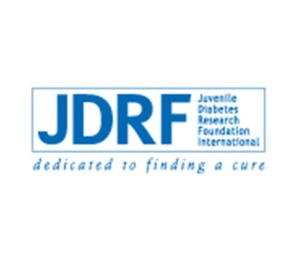Scientists Cure Diabetes in Mice With Nanovaccine
by
Brendon Nafziger, DOTmed News Associate Editor | April 12, 2010

Sponsoring research for a cure
Scientists might have inched nearer to finding a cure for diabetes.
Researchers report in the online edition of the journal Immunity that they developed a kind of vaccine that reversed type 1 diabetes in mice afflicted with the disease.
The so-called nanovaccine uses immune proteins tethered to iron oxide nanoparticles to stop the body's own defenses from killing the islet cells in the pancreas that create insulin. If the results hold up in people, it offers hope to the nearly three million Americans in the United States with type 1 diabetes.
In the study, researchers from the University of Calgary in Alberta, Canada, used one of two mouse models: NOD (non-obese diabetic) mice, a common model for type 1 diabetes, and mice with "humanized" immune cells whose disease more closely mirrors the pathology in people.
After developing full-blown diabetes, the mice were given weekly injections of the nanovaccine. In the NOD mice receiving the drug, over 75 percent had their disease reversed. The "humanized mice" got two slightly different versions of the vaccine. In the group getting the first version, seven out of eight were cured, and for the second, five out of eight.
In a control population of diabetic mice that went untreated, around 75 percent developed diabetes.
"The studies in the humanized NOD mice suggest that this approach might be applicable to human T1D as well," Teodora Staeva, Ph.D., director of immune therapies at the Juvenile Diabetes Research Foundation (JDRF), tells DOTmed News. The JDRF helped sponsor the research.
While the drug also prevented mice from developing diabetes if injected early, Staeva says disease prevention has been achieved before. What is exciting about the current findings is they cured the disease once it had already been established.
"SWITCHING OFF" AUTOIMMUNITY
The challenge to developing a drug is that previously it had been hard to turn off the autoimmune attack against cells in the pancreas without also disabling the normal immune functions that protect the body against disease.
The researchers, led by Dr. Pere Santamaria of the University of Calgary, seemed to be able to do this with the vaccine, which actually makes one batch of immune cells grow in size so as to police another, harmful set of cells.
The vaccine aids a class of special immune cells known as CD8+ autoregulatory T cells. It works because the vaccine's nanoparticles are coated with a certain peptide major histocompatibilty complex (pMHC). This binds to the T cells' receptors and leads to their expansion. These expanded cells then police the problem cells, called antigen-presenting cells. By either killing or suppressing these cells, the T cells prevent them from summoning the rogue armies of autoimmune attackers that rampage through the pancreas, destroying the insulin-making islet cells.
SEVERAL YEARS AWAY
The treatment is still at least several years off from human trials, Staeva says, as it needs to be adapted and optimized for use in humans. But so far, it's promising, and not just for diabetes.
"There's definitely a lot of hope for this for type 1 diabetes and more broadly for autoimmune diseases. If this type of scenario also occurs in other autoimmune diseases then one can envision using appropriate nanovaccines in other autoimmune settings as well," Staeva says.
